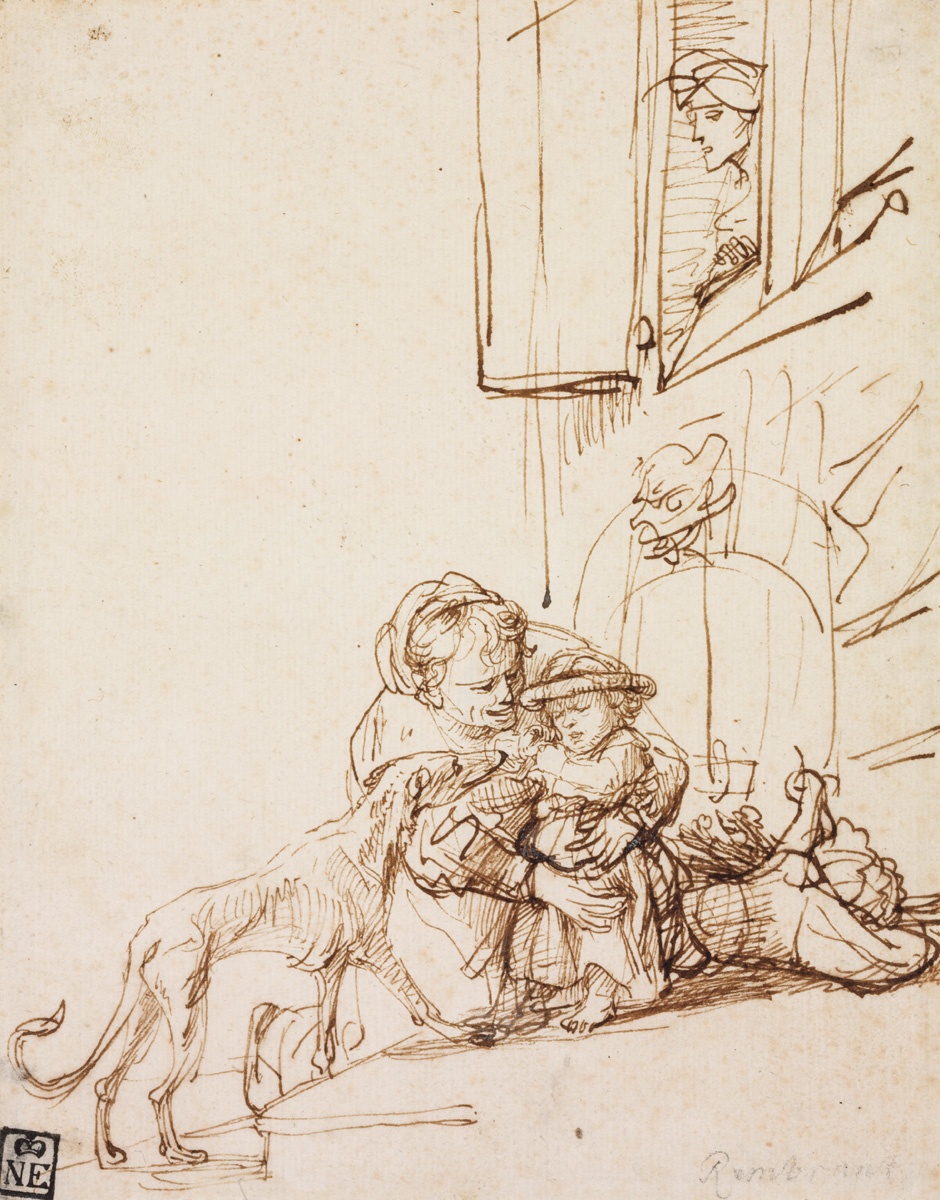Rembrandt is the key figure of seventeenth-century Dutch art, and one of the greatest engravers and drawers of all time. He had four children from his wife Saskia van Uylenburgh, who met an early death; only the youngest of them, Titus, lived to adulthood. In the first years of his marriage Rembrandt was keenly preoccupied with the depiction of women and children: one extant inventory of his goods lists one hundred and thirty-five such drawings. As well as his household, he liked to portray others too, and captured scenes from everyday life in lightning sketches, which did not necessarily serve any other purpose beyond the artist’s observation.In this drawing he brings a charming street scene to life. On the way home from the market a mother comforts her child, frightened by a dog: she kneels by him, embraces him protectively and smiles as she pacifies him. In the Frits Lugt collection in Paris there is a drawing in which the artist (probably still at the scene) put the three figures on paper. In the Budapest sheet Rembrandt elaborated the spontaneous sketch into a genre drawing: the group of figures is tighter-knit, their movements more clarified, and as he conjured up the surroundings, with a few brisk pen-strokes he sketched the steps and the house, with the caricature-like woman looking with curiosity from the window. This version was presumably made in the studio, and yet preserves the nimbleness of the sketches made from life.Eszter Seres
en

